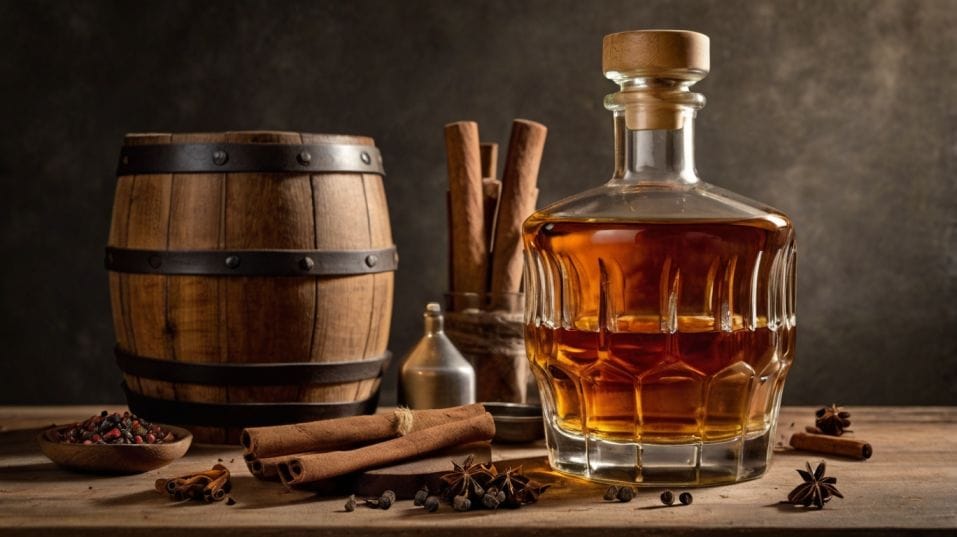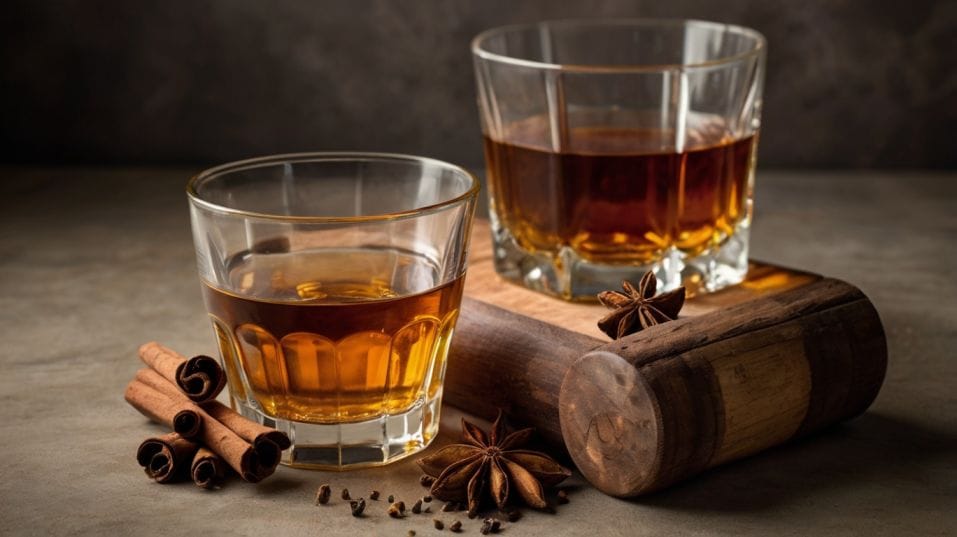Why Some Whiskeys Taste Like Spice Cake
Why do some whiskeys taste like spice cake? Learn how oak, grain, and memory shape flavor—and how to spot bottles that match your taste.

Ever sip a whiskey and think, wait—is that spice cake? Cinnamon flickers. Maybe clove. Something warm, rich, and strangely familiar lingers.
You’re not imagining it. You’re tapping into flavor memory—the brain’s way of linking taste to experience. For whiskey newcomers, that moment matters.
It’s not marketing fluff. It’s a signal you’re tasting with more intent. And when you understand why it happens, your pours get smarter, and your palate gets sharper.
What You’re Really Tasting
Let’s get one thing clear: there’s no spice cake in whiskey. No sugar, no eggs, no nutmeg floating around.
Those rich, dessert-like flavors are born from raw ingredients, barrel choices, time, and heat—all working together to build a layered experience. When you taste spice cake, you're really tasting structure, not sweetness.
The Barrel Effect
Most of that “baking spice” profile starts in the barrel. American oak—the standard for bourbon and many world whiskeys—is packed with flavor compounds that mimic the aromas found in baked goods.
Here’s what’s happening inside that barrel:
- Vanillin: Derived from lignin in the wood. It smells and tastes like vanilla, which is the backbone of most “sweet” or “dessert” notes in whiskey.
- Eugenol: This is your clove and cinnamon. It’s a phenol also found in actual spice plants, but in whiskey, it’s drawn out during charring and aging.
- Lactones: These give you creamy coconut or buttery notes that help round out the sharpness of spice with body and warmth.
- Furfural and maltol: These bring out toasty, caramel, and bread-like flavors, especially in well-aged or heavily toasted casks.

Char level matters too. A deeper char doesn’t just make the barrel darker—it creates a layer of carbon that filters the spirit while unlocking those spice and caramel compounds in the wood’s cell walls.
Think of it like baking the barrel from the inside. The longer whiskey sits in that environment, the more it absorbs.
Over time, the spirit pulls flavor molecules from the toasted wood, transforming harsh distillate into something soft, spiced, and complex.
The Grain Bill’s Hidden Heat
Grain recipes—called mash bills—are another source of spice. Rye grain, in particular, brings heat and intensity.
But that doesn’t mean every rye-heavy whiskey tastes like hot cinnamon candy. When used well, rye creates a natural backbone of dry spice, herbal lift, and gentle pepper.
Paired with corn’s sweetness and malted barley’s fruitiness, it becomes balanced and layered—like the contrasting spices in a cake batter.
Even in lower-rye whiskeys, subtle baking spice can sneak in. Corn brings weight and sugary softness, which helps push those oak-driven spice notes to the front.
Malted barley, even in small amounts, adds roundness and complexity that shows up in fruitcake-like dried fruit, cocoa, or clove tones.
Fermentation and Yeast
This part rarely gets enough credit. Most distilleries don’t talk about their yeast, but the strains they choose—and how long they ferment—can have a major impact on flavor.
Certain yeast strains are known for creating esters (think fruity aromas), while others throw off phenolic compounds that resemble clove, cinnamon, or nutmeg.
Some distillers choose yeast to amplify these notes, especially if they’re going for a rich, old-school profile with weight and spice.
Longer fermentation times can also encourage complexity. In short ferments, you may get alcohol and sugar. In longer ones, you get layers—fruit, spice, earth—many of which read as “cake-like” when they interact with oak and time.
The Brain Behind the Flavor
Here's the kicker: all of this still depends on your brain doing its part. Taste isn’t just physical—it’s emotional and associative.
That’s why you might sip a whiskey and think, “gingerbread,” while someone else tastes “cedar” or “clove oil.” The molecules are real, but your brain is translating them based on memories.
When you catch spice cake in a pour, you're likely processing vanilla, clove, caramelized sugars, and woody warmth through the filter of experience.
If you grew up around baking, you’ll zero in on those dessert-like profiles faster. If you didn’t, the flavors are still there—you just haven’t matched them to a memory yet.
That’s not a flaw. That’s training. The more you taste, the better your flavor library gets.
Why This Matters to Collectors
It’s easy to get distracted by price tags, hype bottles, or the newest limited release. But if you know what you like—say, a spice-forward flavor profile—you can start collecting smarter.
Look beyond brand names. Focus on mash bills, barrel specs, and distillery practices. Know which regions and producers emphasize heavy toast, longer fermentation, or unique rye content.
Over time, you’ll start to build a collection that reflects your preferences, not someone else’s hype list.
Proof also plays a role. Many spice-heavy notes show up more clearly in higher-proof whiskeys. That burn you feel on the first sip? Give it a moment.
Let it sit. Or add a few drops of water. Watch how those cake-like notes rise up once the ethanol edge softens.
This is where real whiskey education lives—not in collecting trophies, but in collecting flavor.
Final Thoughts
If you’ve tasted spice cake in a whiskey, don’t second-guess it. You’re not imagining it—you’re catching a convergence of grain, oak, time, and technique. That moment of recognition means your palate is leveling up.
Now it’s time to push further. Try a higher-rye bourbon. Revisit a bottle you once wrote off as “too hot.” Compare two pours side by side and chase down those cinnamon, clove, and brown sugar notes for yourself.
Because the truth is, no one can taste whiskey for you. But if you keep chasing the spice, you’ll find more than just dessert in a glass—you’ll find your taste.
So pour something bold today. Train your palate. Build your instincts. Your next favorite bottle might be waiting on the shelf already.




